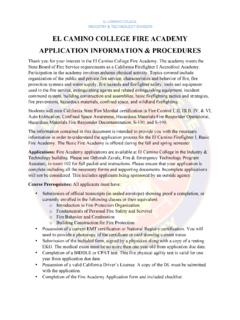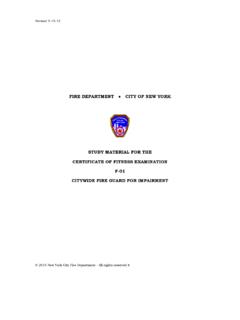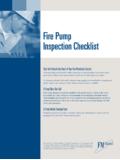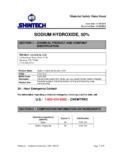Transcription of Respiratory Protection - Home | Occupational Safety and ...
1 RespiratoryProtectionOSHA 30792002 (Revised)This informational booklet providesa generic, non-exhaustive overview of aparticular topic related to OSHA does not alter or determine complianceresponsibilities in OSHA standards or theOccupational Safety and health Act of interpretations and enforcementpolicy may change over time, you shouldconsult current administrative interpretationsand decisions by the Occupational Safety andHealth Review Commission and the Courtsfor additional guidance on OSHA publication is in the public domain andmay be reproduced, fully or partially, withoutpermission. Source credit is requested butnot information is available to sensoryimpaired individuals upon phone: (202) 693 1999;Teletypewriter (TTY) number: (877) 889 Department of LaborElaine L. Chao, SecretaryOccupational Safety and health AdministrationJohn L.
2 Henshaw, Assistant SecretaryOSHA 30792002 (Revised)iiiiiContentsRespiratory ProtectionWhat is a respirator?.. 1 Why do employees need respirators?.. 2 When do employees need to wear respirators?.. 2 How can you ensure proper Protection ?.. 3 Procedures to Ensure Proper ProtectionHow do you develop an effectiverespiratory Protection program?.. 4 How do you choose the correct respirator?.. 6 What are specific respirator uses?.. 8 Who needs to be trained?.. 10 How do you make sure therespirators fit properly?.. 11 How do you inspect andtake care of respirators?.. 12Do you need to do medical evaluations?.. 13 How do you monitor work areas?.. 14 What equipment andair quality standards apply?.. 15 OSHA Assistance, Services, and ProgramsHow can OSHA help me?.. 17 How does Safety and health management systemassistance help employers and employees?
3 17 What are state programs?.. 18 What is consultation assistance?.. 18 What is the Safety and health AchievementRecognition Program (SHARP)?.. 18ivWhat are the Voluntary ProtectionPrograms (VPPs)? .. 19 How can a partnership with OSHA improve worker Safety and health ?.. 20 What is OSHA s StrategicPartnership Program (OSPP)?.. 21 What Occupational Safety andhealth training does OSHA offer?.. 21 What is the OSHA Training Grant Program?.. 22 What other assistance materialsdoes OSHA have available?.. 22 What do I do in case of anemergency or to file a complaint?.. 23 OSHA Regional andArea Office and health Consultation Projects ..321 What is a respirator?A respirator is a protective device that covers the noseand mouth or the entire face or head to guard the weareragainst hazardous atmospheres.
4 Respirators may be: Tight-fitting that is, half masks, which cover the mouthand nose and full facepieces that cover the face from thehairline to below the chin; or Loose-fitting, such as hoods or helmets that cover thehead addition, there are two major classes of respirators: Air-purifying, which remove contaminants from the air;and Atmosphere-supplying, which provide clean, breathableair from an uncontaminated source. As a general rule,atmosphere-supplying respirators are used for morehazardous Protection2 Why do employees need respirators?When employees must work in environments withinsufficient oxygen or where harmful dusts, fogs, smokes,mists, fumes, gases, vapors, or sprays are present, theyneed respirators. These health hazards may cause cancer,lung impairment, other diseases, or toxic substances are present in the workplaceand engineering controls are inadequate to reduce oreliminate them, respirators are necessary.
5 Some atmosphere-supplying respirators can also be used to protect againstoxygen-deficient atmospheres. Increased breathing rates,accelerated heartbeat, and impaired thinking or coordinationoccur more quickly in an oxygen-deficient or other hazardousatmosphere. Even a momentary loss of coordination can bedevastating if it occurs while a worker is performing apotentially dangerous activity such as climbing a do employeesneed to wear respirators?Employees need to wear respirators wheneverengineering and work practice control measures arenot adequate to prevent atmospheric contaminationat the worksite. Strategies for preventing atmosphericcontamination may include enclosing or confining thecontaminant-producing operation, exhausting thecontaminant, or substituting with less toxic have their limitations and are not asubstitute for effective engineering and work practicecontrols.
6 When it is not possible to use these controls toreduce airborne contaminants below their occupationalexposure levels, such as during certain maintenance andrepair operations, emergencies, or when engineering controlsare being installed, respirator use may be the best or only3way to reduce worker exposure. In other cases, wherework practices and engineering controls alone cannotreduce exposure levels to below the Occupational exposurelevel, respirator use is respirators are required to protect worker health ,specific procedures are necessary to ensure the equipment can you ensure proper Protection ?OSHA s respirator standard1 requires employers toestablish and maintain an effective Respiratory protectionprogram when employees must wear respirators to protectagainst workplace hazards. Different hazards requiredifferent respirators, and employees are responsible forwearing the appropriate respirator and complying withthe Respiratory Protection standard contains requirements for programadministration, worksite-specific procedures, respiratorselection, employee training, fit testing, medical evaluation,and respirator use, cleaning, maintenance, and must use respirators while effectiveengineering controls, if they are feasible, are being engineering controls are not feasible, employers mustprovide respirators and employees must wear them whennecessary to protect their health .
7 The employee s equipmentmust be properly selected, used, and maintained for aparticular work environment and contaminant. In addition,employers must train employees in all aspects of therespiratory Protection OSHA s regulations cover general, construction, and maritime Title 29 of the Code of Federal Regulations (CFR), Part ; andthe Compressed Gas Association s Commodity Specification G-7-1989,also referenced in 29 CFR Part to EnsureProper ProtectionHow do you develop an effectiverespiratory Protection program?The primary objective of the Respiratory protectionprogram is to prevent exposure to air contaminated withharmful dusts, fogs, fumes, mists, gases, smokes, vapors, orsprays, and thus to prevent Occupational program administrator must be responsible for theprogram. This person must know enough about respiratorsto supervise the program plants or companies with industrial hygiene,in-house medical department, Safety engineering, or fireprevention departments should administer the program inliaison with the program administrator.
8 In smaller plantswithout specialists, an upper-level superintendent, foreman,or qualified person must serve as program respirator program should stress thorough trainingof all respirator users. Employees must be aware that arespirator does not eliminate the hazard. If the respiratorfails, the user will be overexposed to dangerous reduce the possibility of failure, the respirator must fitproperly and be maintained in a clean and and employees must understand therespirator s purpose and limitations. Users must not alteror remove the respirator even for a short time, even if itis effective respirator program must cover thefollowing factors: Written worksite specific procedures; Program evaluation;5 Selection of an appropriate respirator approved by theNational Institute for Occupational Safety and health (NIOSH); Training; Fit testing; Inspection, cleaning, maintenance, and storage; Medical evaluations; Work area surveillance; and Air quality OSHA standards or employers requirerespirator use, there must be a complete respiratoryprotection program.
9 Employers must have writtenoperating procedures to ensure that employees use therespirators safely and properly. Users must be familiarwith these procedures and with the respirators availableand their workplaces with no hazardous exposures, butwhere workers choose to use respirators voluntarily,certain written program elements may be necessary toprevent potential hazards associated with respirator must evaluate whether respirator use itself mayactually harm employees. If so, employers must medicallyevaluate employees and, if necessary, restrict respirator use,as well as comply with program elements. Employers mustinform employees voluntarily using respirators of basicinformation in Appendix D of OSHA s respiratoryprotection must evaluate the effectiveness of acompany s respirator program regularly and modify thewritten operating procedure as necessary to reflect theevaluation results.
10 A labor-management team may beeffective in conducting these periodic do you choose the correct respirator?Choosing the right equipment involves: Determining what the hazard is and its extent, Considering user factors that affect respiratorperformance and reliability, and Selecting an appropriate NIOSH-certified must be used in line with specificationsaccompanying the NIOSH selecting respirators, employers must consider thechemical and physical properties of the contaminant, as wellas the toxicity and concentration of the hazardous materialand the amount of oxygen present. Other selection factorsare nature and extent of the hazard, work rate, area to becovered, mobility, work requirements and conditions, aswell as the limitations and characteristics of the respirators use filters or sorbents to removeharmful substances from the air.

















